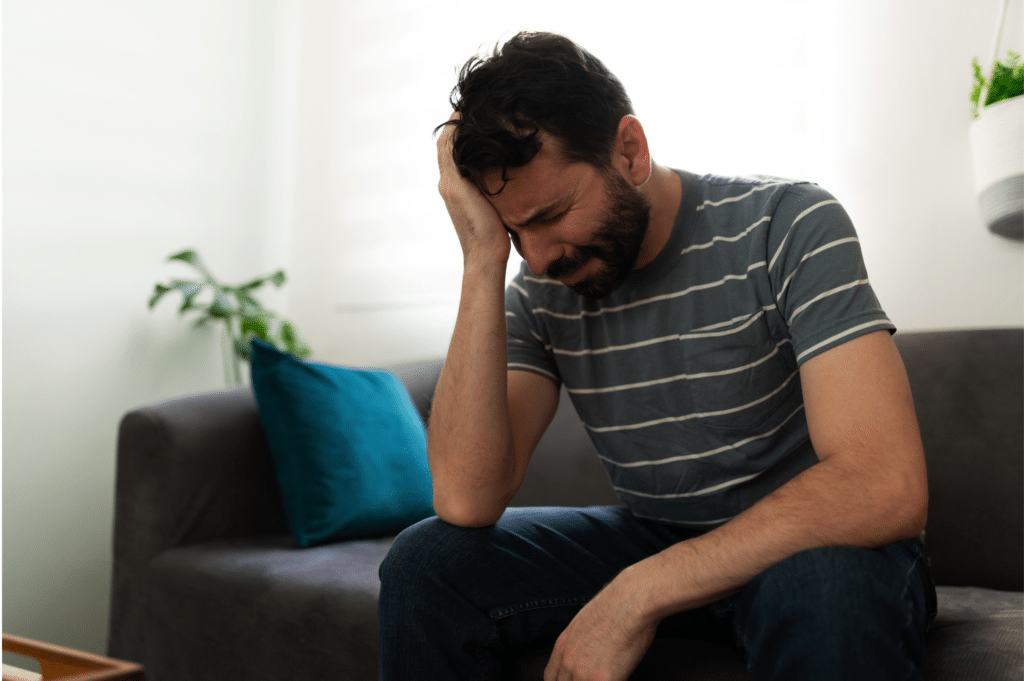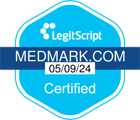Are You Addicted Without Realizing It?
Many people take prescription medications to treat chronic pain that can lead to physical or emotional dependency. If you take prescription painkillers, then you might wonder, “Can I be addicted to opioids and not know it?” Learning about the symptoms of opioid addiction that you might miss helps you take action at the earliest signs of a potential problem.
In many cases, opioid addiction develops gradually when substance use warning signs aren’t so obvious. In one common scenario, a person starts taking opioids for pain relief and may use more without understanding how addiction develops. Learning how to recognize the hidden signs of addiction makes it easier to identify when it’s time to reach out for professional opioid use disorder treatment.
What Is Opioid Use Disorder and How Does It Begin?
An opioid use disorder (OUD) is a health condition that involves using opioids compulsively, even though harmful consequences may occur. Usually, OUD begins with legitimate use. For instance, the connection between people having both chronic pain and OUD is strong. Currently, 59.5% of people who misuse painkillers have a prescription for the medication.
Over time, you or a loved one may develop tolerance for the medication that causes it not to work as well as it did in the past. The escalating opioid use can then lead to physical dependence and unrecognized addiction.
Exploring the difference between physical dependence vs. addiction can help you begin to understand how the process of developing an OUD works. When you find yourself wondering, “What are the early signs of an opioid use disorder?” it’s helpful to know that being proactive can give you the best outcomes for treatment.
What Are the Symptoms of Opioid Addiction You Might Miss?

Some of the most common OUD symptoms you might miss are so subtle that it takes some serious thought to notice. Reading through this list of signs can help you know when to get help for opioid addiction.
Needing More Medication for the Same Relief
Taking a look at how opioids affect the brain can help explain how tolerance builds over time. In an effort to create balance, your brain may begin producing fewer of its natural endorphins in response to opioid use.
Eventually, this causes your brain’s opioid receptors to become less responsive when you take the medication. One of the symptoms of opioid addiction you might miss is taking more medication to achieve the same effects you felt in the past.
Telling your physician if your medication no longer seems to be working before you adjust your dosage on your own can help prevent prescription drug misuse. But, there’s also help available to halt prescription misuse patterns if the sign of increasing your dosage rings true for your situation.
Opioid treatment options include helping you find ways to manage chronic pain and anxiety without relying on habit-forming medications. Receiving a personalized OUD treatment plan makes it possible to end the cycle of using more medication to get around increasingly higher levels of tolerance.
Taking Opioids for Emotional Relief
You’ll also find a connection between emotional changes and opioid use. Living with chronic pain can cause anxiety, stress and a lack of sleep. Taking opioids to address emotional challenges instead of solely for pain is one of the symptoms of opioid dependence you might miss.
While opioids can provide you with temporary relief from your worries due to their sedative properties, anxiety tends to come back once the medication wears off. Talking through your worries in group and individual therapy is one option that can provide long-term relief for your emotional challenges.
Experiencing Withdrawal Symptoms Between Doses
Opioid withdrawal symptoms can include irritability, mood swings and flu-like symptoms. Noticing these symptoms is a sign that you may have developed a physical opioid dependence. Since the risk of experiencing severe withdrawal symptoms increases with long-term use, it’s important to take this warning sign seriously.
Worrying About the Next Dose
Using more of your medication than the prescription recommends could leave you worrying excessively about running out of your opioid pills. Checking your prescription bottle frequently, counting pills or planning how to get more could indicate that you’ve crossed the line into physical dependency.
Having Changes in Your Behavior
Feeling defensive about your opioid use is one of the behavioral signs of addiction. You might feel the need to lie about how many pills you are taking. People with OUD may also try to hide their dependency on painkillers from others.
Failing at Attempts to Cut Back
One of the symptoms of OUD you might miss is trying to reduce your use of painkillers. Wanting to stop but being unable to due to pain or withdrawal symptoms is a sure sign that it’s time to seek treatment for opioid use disorder.
Ignoring Negative Consequences
Eventually, the increasing use of opioids can lead to challenges in your personal relationships. Many people struggle to maintain their job duties as they begin to exhibit signs of opioid misuse. You could also begin to develop health issues.
Choosing to continue using opioids despite seeing negative impacts on your life could mean that you are dependent on your medication. If your loved one is exhibiting this hidden sign of an OUD, then try to remember that they may need help reaching out for treatment.
Planning an intervention may be an option that can help your loved one notice the negative impact that opioid use is having on their family and social relationships.
Why Are the Opioid Addiction Signs Commonly Overlooked?

Understanding why there are so many signs of opioid addiction that you might miss also requires exploring the myths and stigmas that exist regarding OUD. Using opioids is sometimes normalized due to prescriptions.
While there is nothing wrong with using a painkiller prescription as your physician describes, issues begin to occur when you take more than your prescribed dose.
Some stigmas exist that could cause someone to hide symptoms or dismiss warning signs. Denial plays a powerful role in OUD, and talking to a professional opioid treatment team can help you overcome this hurdle.
Opioid use disorders can also look very different from what someone might see depicted in movies or on TV. People from all walks of life are susceptible to developing the early signs of opioid use disorder. In fact, you might begin misusing your medication in an attempt to reduce pain that interferes with your career, parenting responsibilities or volunteer work in the community.
Performing a Self-Assessment for the Symptoms of Opioid Addiction You Might Miss
Figuring out how to know if you have opioid use disorder requires some honest exploration of your current feelings and lifestyle. Asking yourself these questions can reveal if you are struggling with the symptoms of opioid addiction that you might miss:
- Do I feel anxious or worried without opioids?
- Am I using my medication in ways that are not prescribed?
- Do I need my opioid pills to feel “normal”?
Spotting the early signs of opioid use disorder allows you to benefit from early intervention that provides you with better recovery outcomes.
Knowing What to Do If You Recognize the Early Signs of Addiction
Fortunately, there is a wide range of opioid treatment options available. Once you spot the early signs of addiction, it’s important to talk to a provider or an addiction specialist. At MedMark Treatment Centers, we provide assessments that can identify if you can benefit from OUD treatment.
After an assessment, you can begin to explore your opioid treatment options. Medication-assisted treatment (MAT) can help reduce your withdrawal symptoms to make recovery more manageable.
Group and individual therapy are also available to help you talk through your physical and emotional challenges as you recover from OUD. You can also benefit from support groups that take you through the earliest days of your treatment and can later serve as a form of aftercare for your long-term recovery.
Figuring out when to get help for opioid addiction is the first step toward enjoying greater well-being. If you recognize the hidden signs of addiction, then it helps to know that you aren’t alone. Our substance use disorder treatment team is available to help you receive early support that gives you momentum for ending your reliance on opioids.
Gaining Awareness of a Painkiller Addiction Can Change the Outcome
As with many substance use disorders, recognizing the signs of OUD early can prevent things from worsening. Eliminating the stigma that exists regarding opioid misuse is one of our greatest goals, and we believe that it is important to make it clear that there is no shame in getting help.
Addiction is treatable, and reaching out for help is a sign of strength. If you’ve noticed the signs of opioid addiction in yourself or a loved one, then contact MedMark Treatment Centers today. You can call us to speak to a compassionate member of our care team today. We also have a simple online confidential form that you can use to connect with our treatment providers.
Remember that you’re never alone when dealing with opioid use disorders. Seeking prompt care allows you to learn how to manage your physical and emotional needs as you begin working on your opioid use recovery.





